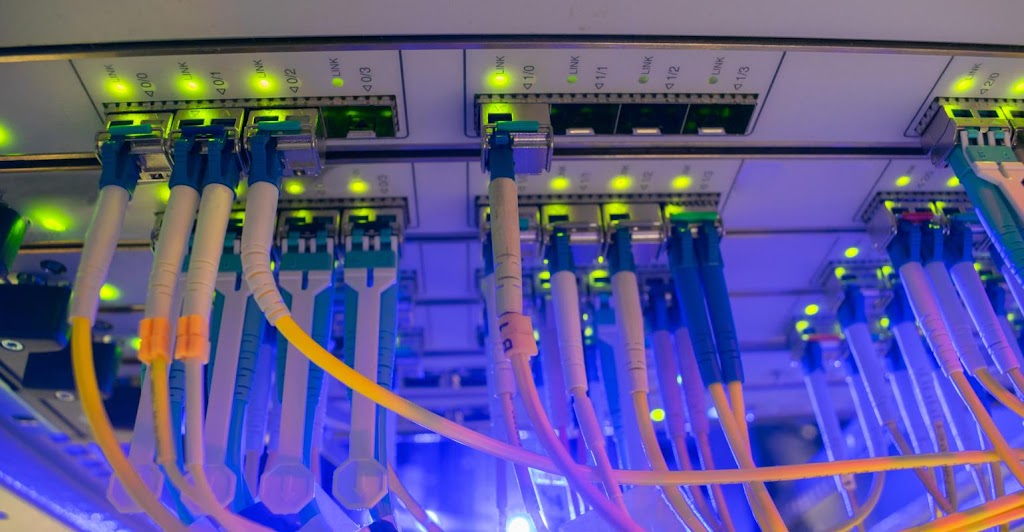“CCNP Success Unveiled: Your Comprehensive Guide to 100
Top Questions and Answers for Networking Excellence”
Q1: What is EIGRP and how does it work?
A1: EIGRP (Enhanced
Interior Gateway Routing Protocol) is a Cisco proprietary routing protocol. It
uses a metric based on bandwidth, delay, reliability, load, and MTU to
calculate the best path to a destination.
Q2: What are VLANs and why are they used?
A2: VLANs (Virtual Local Area Networks) are used to
logically segment a physical network into multiple broadcast domains. They
improve network efficiency and security by isolating traffic between different
VLANs.
Q3: Explain the purpose of OSPF (Open Shortest Path First).
A3: OSPF is a
link-state routing protocol that calculates the shortest path to a destination
based on the cost of the links. It’s designed to converge quickly and handle
large networks efficiently.
Q4: What is BGP (Border Gateway Protocol) and when is it
used?
A4: BGP is an exterior gateway protocol used to exchange
routing and reachability information between autonomous systems on the
Internet. It’s used by Internet Service Providers (ISPs) and large
organizations.
Q5: How does STP (Spanning Tree Protocol) prevent loops in
Ethernet networks?
A5: STP blocks redundant paths in a network to prevent
broadcast storms and loops. It selects a root bridge and disables certain links
to create a loop-free topology.
Q6: What is HSRP (Hot Standby Router Protocol) and why is it
used?
A6: HSRP is a Cisco proprietary protocol that provides
redundancy for the default gateway IP address. It allows two or more routers to
share a virtual IP address and respond to ARP requests.
Q7: Explain the concept of Quality of Service (QoS) in
networking.
A7: QoS is a set of techniques used to prioritize and manage
network traffic to ensure that certain applications or data types receive
higher quality service, such as low latency or high bandwidth.
Q8: What is MPLS (Multiprotocol Label Switching) and its use
in networks?
A8: MPLS is a protocol used for directing data packets
through a network using labels, allowing for efficient routing and traffic
engineering. It’s often used in service provider networks for traffic
optimization.
Q9: How does VRRP (Virtual Router Redundancy Protocol)
enhance network reliability?
A9: VRRP provides automatic failover of the default gateway
IP address in case the primary router fails. Multiple routers share a virtual
IP, ensuring uninterrupted network connectivity.
Q10: What is the purpose of access control lists (ACLs) in
networking?
A10: ACLs are used to filter and control network traffic
based on rules. They can be used to permit or deny traffic based on
source/destination IP addresses, port numbers, or other criteria.
Q11: What is VTP (VLAN Trunking Protocol) and its role in
VLAN management?
A11: VTP is a Cisco protocol used to synchronize VLAN
configuration across switches within the same VTP domain, making VLAN
management more efficient.
Q12: Explain the concept of EtherChannel and its benefits.
A12: EtherChannel is a technology that allows multiple
physical links between switches to be bundled together into a single logical
link. This improves bandwidth and provides redundancy.
Q13: What is IPsec (Internet Protocol Security) used for?
A13: IPsec is a suite of protocols used to secure
communication over IP networks. It provides encryption, authentication, and
integrity for data transmitted between devices.
Q14: How does NAT (Network Address Translation) work and why
is it used?
A14: NAT translates private IP addresses to a single public
IP address when traffic goes out to the Internet. This conserves IP addresses
and enhances security by masking internal network structure.
Q15: What is the purpose of DHCP (Dynamic Host Configuration
Protocol)?
A15: DHCP is used to
automatically assign IP addresses, subnet masks, and other network
configuration settings to devices on a network, reducing manual configuration.
Q16: Explain the difference between static routing and
dynamic routing.
A16: Static routing involves manually configuring routes in
routers, while dynamic routing protocols automatically exchange route
information between routers, adapting to network changes.
Q17: What are the benefits of using VRFs (Virtual Routing
and Forwarding) in networking?
A17: VRFs enable multiple instances of a routing table on
the same router, allowing for network segmentation and isolation. This is
particularly useful in multi-tenant environments.
Q18: Describe the purpose of Syslog in network monitoring.
A18: Syslog is a
protocol used to collect and forward log messages from network devices to a
central server for monitoring and troubleshooting purposes.
Q19: What is the purpose of a network firewall?
A19: A network firewall is a security device or software
that filters incoming and outgoing network traffic based on predefined security
rules, protecting the network from unauthorized access.
Q20: Explain the concept of Q-in-Q (Double Tagging) in
VLANs.
A20: Q-in-Q is a technique used to encapsulate multiple VLAN
tags within a single Ethernet frame, allowing service providers to carry
customer VLANs over their network infrastructure.
Q21: What is BGP route aggregation, and why is it used?
A21: BGP route aggregation involves summarizing multiple
routes into a single route advertisement. This reduces the size of the routing
table and helps optimize network performance.
Q22: What is the purpose of NTP (Network Time Protocol) in
networking?
A22: NTP is used to synchronize the time across network
devices to ensure consistent timekeeping for various operations and
applications.
Q23: What are the differences between SNMPv2 and SNMPv3?
A23: SNMPv3 provides enhanced security features compared to
SNMPv2, including data encryption, authentication, and access control.
Q24: Explain the concept of subnetting and its benefits.
A24: Subnetting involves dividing a larger IP network into
smaller subnetworks. This improves network efficiency, reduces broadcast domain
size, and enhances security.
Q25: What is the purpose of route redistribution in dynamic
routing?
A25: Route redistribution allows routers running different
routing protocols to exchange route information, enabling interoperability
between diverse networks.
Q26: What is the function of a proxy server in networking?
A26: A proxy server acts as an intermediary between clients
and servers, forwarding requests and responses. It can enhance security,
caching, and content filtering.
Q27: Explain the differences between STP and RSTP (Rapid
Spanning Tree Protocol).
A27: RSTP provides faster convergence and better performance
in comparison to STP, reducing downtime in case of link failures.
Q28: What is DMVPN (Dynamic Multipoint Virtual Private
Network)?
A28: DMVPN is a scalable VPN solution that allows remote
sites to communicate directly without requiring a direct VPN connection to each
other.
Q29: What is the purpose of H.323 and SIP (Session
Initiation Protocol) in VoIP?
A29: H.323 and SIP are protocols used for initiating,
maintaining, and terminating multimedia communication sessions, such as voice
and video calls, over IP networks.
Q30: Explain the concept of GRE (Generic Routing
Encapsulation).
A30: GRE is a
tunneling protocol used to encapsulate a wide variety of network layer
protocols over point-to-point connections. It enables the creation of virtual
private networks (VPNs) and other overlay networks.
Q31: What is the purpose of STP (Spanning Tree Protocol)
PortFast?
A31: STP PortFast is used to immediately transition a port
from blocking to forwarding state, bypassing the usual listening and learning
states. It’s typically used on ports connecting to end-user devices to reduce
convergence time.
Q32: Explain the concept of BFD (Bidirectional Forwarding
Detection).
A32: BFD is a protocol used to quickly detect failures in
the path between two network devices, enhancing the convergence time of routing
protocols.
Q33: What is the purpose of a network load balancer?
A33: A network load balancer distributes incoming network
traffic across multiple servers to optimize resource utilization and ensure
high availability of services.
Q34: What is the difference between LACP and PAgP in link
aggregation?
A34: LACP (Link
Aggregation Control Protocol) is an industry-standard protocol, while PAgP
(Port Aggregation Protocol) is a Cisco proprietary protocol. Both achieve link
aggregation by bundling multiple links together.
Q35: Explain the concept of FHRP (First Hop Redundancy
Protocol).
A35: FHRP is used to provide high availability for the
default gateway IP address in a network. Protocols like HSRP, VRRP, and GLBP
are examples of FHRP.
Q36: What is the purpose of the MPLS label in MPLS networks?
A36: The MPLS label is used to make forwarding decisions in
an MPLS network, allowing routers to quickly route packets without having to
analyze the entire IP header.
Q37: Describe the purpose of PBR (Policy-Based Routing) in
networking.
A37: PBR allows you to define routing decisions based on
criteria such as source IP address, source port, or protocol, enabling more
flexible routing configurations.
Q38: What is the purpose of GRE over IPsec tunnels?
A38: GRE over IPsec tunnels combine the tunneling
capabilities of GRE with the security features of IPsec, providing a secure and
encapsulated communication channel between two endpoints.
Q39: Explain the concept of SD-WAN (Software-Defined Wide
Area Network).
A39: SD-WAN is a technology that simplifies the management
and operation of a wide area network by using software-defined principles to
optimize the routing of network traffic.
Q40: What is the purpose of VTP pruning in VLAN management?
A40: VTP pruning prevents unnecessary broadcast traffic from
being forwarded to switches that do not have active ports in a particular VLAN.
Q41: Explain the differences between link-state and
distance-vector routing protocols.
A41: Link-state protocols (e.g., OSPF, IS-IS) exchange
detailed information about the entire network, while distance-vector protocols
(e.g., RIP, EIGRP) exchange route updates based on distance metrics.
Q42: What is the purpose of BFD (Bidirectional Forwarding
Detection) in dynamic routing?
A42: BFD detects failures in network paths faster than
traditional routing protocols, improving convergence times and enhancing
network stability.
Q43: Describe the purpose of Multicast routing in
networking. A43: Multicast routing enables the efficient distribution of data
to multiple recipients, optimizing bandwidth usage by sending a single copy of
data to multiple destinations.
Q44: What are the differences between ACLs (Access Control
Lists) and firewall rules?
A44: ACLs filter traffic based on various criteria, while
firewall rules often involve more sophisticated stateful inspection and can
include application-level filtering.
Q45: Explain the concept of VxLAN (Virtual Extensible LAN)
in networking.
A45: VxLAN is a tunneling protocol used to extend Layer 2
segments over an underlying Layer 3 network, facilitating large-scale
virtualization and data center interconnects.
Q46: What is the purpose of BGP communities in routing?
A46: BGP communities are used to tag and control routing
policies, allowing network operators to influence the way their routes are
propagated and processed by BGP routers.
Q47: Describe the concept of network segmentation and its
benefits.
A47: Network segmentation involves dividing a network into
smaller segments, enhancing security by isolating sensitive data and limiting
the impact of security breaches.
Q48: What is the purpose of L3VPN (Layer 3 Virtual Private
Network)?
A48: L3VPN allows
service providers to provide secure, isolated, and routed communication between
different customer sites, while sharing the same infrastructure.
Q49: Explain the concept of EVPN (Ethernet Virtual Private
Network).
A49: EVPN is a technology that enables the creation of
virtual Ethernet segments across a provider’s network, suitable for data center
interconnects and multi-tenant environments.
Q50: What is the role of the root guard feature in spanning
tree topologies?
A50: Root guard
prevents inferior switches from becoming the root bridge in a spanning tree
domain by blocking ports that receive superior BPDUs.
Q51: What is the purpose of IP SLA (Internet Protocol
Service Level Agreement) in networking?
A51: IP SLA is a
feature that measures network performance by sending synthetic traffic and
analyzing responses, allowing network administrators to monitor and
troubleshoot network behavior.
Q52: Explain the concept of VTP pruning in VLAN management.
A52: VTP pruning is a
feature that limits unnecessary broadcast and multicast traffic in VLANs by
preventing switches from forwarding traffic to segments of the network where
it’s not needed.
Q53: What are the benefits of using BGP route reflectors in
large networks?
A53: BGP route
reflectors simplify the BGP topology by allowing route reflection instead of
full mesh IBGP connections, reducing the number of required peerings.
Q54: What is the purpose of CoPP (Control Plane Policing) in
networking?
A54: CoPP is used to protect a network device’s control
plane by limiting and prioritizing the traffic that reaches it, preventing
resource exhaustion and security vulnerabilities.
Q55: Explain the concept of SDN (Software-Defined Networking).
A55: SDN is an approach to networking that separates the
control plane (network management) from the data plane (packet forwarding),
allowing network administrators to programmatically manage and configure
networks.
Q56: What is the purpose of WCCP (Web Cache Communication
Protocol) in networking?
A56: WCCP is used to redirect web traffic to a caching
server, optimizing bandwidth usage and improving the performance of web-based
applications.
Q57: Describe the purpose of Cisco NetFlow in network
monitoring.
A57: NetFlow is a network protocol that collects IP traffic
flow information for analysis, helping network administrators to monitor
network behavior, troubleshoot issues, and plan for capacity.
Q58: What is the purpose of the “ip
helper-address” command in networking?
A58: The “ip helper-address” command is used to
forward broadcasts or multicasts, such as DHCP requests, to a specific IP
address, typically a DHCP server in a different subnet.
Q59: Explain the concept of Q-in-Q (Double Tagging) in
networking.
A59: Q-in-Q (Double Tagging) is a method used to add a
second 802.1Q VLAN tag to an Ethernet frame, allowing service providers to
differentiate between customer VLANs within their networks.
Q60: What is the purpose of EEM (Embedded Event Manager) in
networking?
A60: EEM is a Cisco feature that allows the creation of
scripts to automate tasks and responses to specific events, such as network
failures or configuration changes.
Q61: Describe the purpose of EIGRP stub routing in
networking.
A61: EIGRP stub routing reduces the size of routing tables
and enhances network security by preventing certain types of routes from being
advertised in a stub router.
Q62: What are the advantages of using IPv6 over IPv4 in
networking?
A62: IPv6 offers a larger address space, improved security,
simplified header structure, and built-in support for features like
autoconfiguration and multicast.
Q63: Explain the concept of PIM (Protocol Independent
Multicast) in networking.
A63: PIM is a
multicast routing protocol used to forward multicast traffic in a network. It
allows routers to dynamically determine the path for forwarding multicast
packets.
Q64: What is the purpose of NSX (Network Virtualization and
Security) in virtualized environments?
A64: NSX is a VMware product that provides network
virtualization and security features, allowing for the creation of virtual
networks and enhanced network management in virtualized environments.
Q65: Describe the purpose of BGP route dampening in routing.
A65: BGP route dampening is used to minimize the instability
caused by rapidly flapping routes by temporarily suppressing updates for
unstable routes.
Q66: What is the role of MLAG (Multi-Chassis Link
Aggregation) in networking?
A66: MLAG enables
multiple switches to operate as a single logical switch, providing redundancy
and load balancing while avoiding the limitations of traditional Spanning Tree
Protocol.
Q67: Explain the concept of LISP (Locator/ID Separation
Protocol).
A67: LISP is a protocol that separates the endpoint
identifier (ID) and routing locator (RLOC) in IP addresses, enabling efficient
and scalable IP mobility and multihoming.
Q68: What is the purpose of loopback interfaces in
networking?
A68: Loopback interfaces are virtual interfaces used for
testing, management, and establishing a stable source address for network
services.
Q69: Describe the concept of NAT64 (Network Address
Translation 64).
A69: NAT64 is used to enable communication between IPv6-only
and IPv4-only networks by translating IPv6 addresses to IPv4 addresses and vice
versa.
Q70: What is the purpose of ERSPAN (Encapsulated Remote
Switched Port Analyzer) in network monitoring?
A70: ERSPAN is a feature that enables the remote monitoring
of network traffic by encapsulating the traffic in GRE (Generic Routing
Encapsulation) and sending it to a remote destination for analysis.
Q71: What is the purpose of BGP Confederations in
large-scale networks?
A71: BGP Confederations divide an autonomous system into
smaller sub-ASes, making BGP configuration and management more manageable in
large networks.
Q72: Explain the role of a network proxy in cybersecurity.
A72: A network proxy acts as an intermediary between clients
and servers, providing security features like content filtering, access
control, and anonymizing user requests.
Q73: What is the purpose of OER (Optimized Edge Routing) in
networking?
A73: OER is a Cisco feature that optimizes routing decisions
based on real-time performance data, improving the selection of exit points for
traffic leaving the network.
Q74: Describe the concept of FCoE (Fibre Channel over
Ethernet).
A74: FCoE allows Fibre Channel traffic to be encapsulated
and transmitted over Ethernet networks, reducing the need for separate storage
and data networks.
Q75: What are the benefits of using VPLS (Virtual Private
LAN Service) in networking?
A75: VPLS extends Layer 2 Ethernet connectivity across a
wide area network, allowing geographically dispersed sites to appear as if they
are on the same LAN.
Q76: Explain the purpose of EAP (Extensible Authentication
Protocol) in network security.
A76: EAP is an authentication framework used in wireless
networks and virtual private networks, supporting various methods for user
authentication and access control.
Q77: What is the purpose of OAM (Operations, Administration,
and Maintenance) in networking?
A77: OAM mechanisms
are used to monitor and manage the health and performance of network links and
devices, helping to ensure high availability and troubleshoot issues.
Q78: Describe the concept of LAC/LNS (L2TP Access
Concentrator/L2TP Network Server) in VPNs.
A78: LACs and LNSs
are components used in Layer 2 Tunneling Protocol (L2TP) VPNs, facilitating the
creation of virtual private networks over a shared infrastructure.
Q79: What is the purpose of FHRP (First Hop Redundancy
Protocol) group numbers?
A79: FHRP group numbers distinguish different instances of
FHRP protocols, such as HSRP or VRRP, running on the same router to provide
redundancy for different VLANs.
Q80: Explain the role of NAT64 (Network Address Translation
64) in IPv6 migration.
A80: NAT64 is used to allow IPv6 devices to communicate with
IPv4 devices by translating IPv6 addresses to IPv4 addresses and vice versa,
aiding in the transition to IPv6.
Q81: What is the purpose of PIM sparse mode in multicast
routing?
A81: PIM sparse mode is used to forward multicast traffic
only to those routers and interfaces that explicitly request it, minimizing
unnecessary traffic distribution.
Q82: Describe the concept of route filtering and route maps
in BGP.
A82: Route filtering involves controlling which routes are
allowed or denied in BGP updates. Route maps are used to define the conditions
and actions for manipulating BGP routes.
Q83: What is the purpose of IEEE 802.1X in network security?
A83: IEEE 802.1X is a
standard used for port-based network access control, requiring devices to
authenticate before they can access the network.
Q84: Explain the concept of MPLS L3VPN (Layer 3 Virtual
Private Network).
A84: MPLS L3VPN provides a secure and scalable way to
establish virtual private networks by using MPLS labels to route traffic
between different customer sites.
Q85: What is the purpose of H.265 (High-Efficiency Video
Coding) in video streaming?
A85: H.265 is a video compression standard that offers
higher video quality and compression efficiency than its predecessors, such as
H.264.
Q86: Describe the concept of VSS (Virtual Switching System)
in networking.
A86: VSS is a Cisco technology that enables two physical
switches to operate as a single logical switch, providing redundancy, load
balancing, and simplified management.
Q87: What is the purpose of WRR (Weighted Round Robin) in
QoS?
A87: WRR is a queuing algorithm used in Quality of Service
to allocate bandwidth fairly among different classes of traffic, based on
predefined weights.
Q88: Explain the role of GRE (Generic Routing Encapsulation)
in VPNs.
A88: GRE is used to create a virtual point-to-point
connection between two network devices, enabling the transmission of data
packets across an intermediate network.
Q89: What is the purpose of LDP (Label Distribution
Protocol) in MPLS networks?
A89: LDP is used to establish MPLS label-switched paths by
distributing labels and exchanging reachability information between MPLS
routers.
Q90: Describe the concept of OpenFlow in SDN.
A90: OpenFlow is a protocol
used to communicate between the control and data planes in Software-Defined
Networking, enabling centralized management and programmability of network
devices.
Q91: What is the purpose of EVPN (Ethernet Virtual Private
Network) Type 2 routes?
A91: EVPN Type 2 routes are used to advertise MAC addresses
and VLAN information in EVPN networks, facilitating Layer 2 connectivity across
different locations.
Q92: Explain the concept of DHCP snooping in network
security.
A92: DHCP snooping is a security feature that prevents
unauthorized or malicious DHCP servers from distributing incorrect or malicious
IP configuration to clients.
Q93: What is the role of FCoE (Fibre Channel over Ethernet)
in converged networks?
A93: FCoE allows the convergence of storage and data
networking by encapsulating Fibre Channel frames within Ethernet frames,
reducing the need for separate infrastructure.
Q94: Describe the purpose of ACL logging in network
security.
A94: ACL logging involves capturing and recording network
traffic that matches certain access control list rules, aiding in security
monitoring, analysis, and troubleshooting.
Q95: What is the purpose of the “auto summary”
command in OSPF?
A95: The “auto-summary” command enables or
disables the automatic summarization of OSPF routes at network classful
boundaries, affecting the way routes are advertised.
Q96: Explain the concept of SGT (Security Group Tag) in
network security.
A96: SGT is a tag
associated with network traffic that helps define security policies, allowing organizations
to enforce access control based on the origin and context of the traffic.
Q97: What is the purpose of BFD (Bidirectional Forwarding
Detection) in network design?
A97: BFD is used to detect failures in network paths
quickly, improving the convergence time of routing protocols and enhancing
network reliability.
Q98: Describe the concept of MLD (Multicast Listener
Discovery) in IPv6 networks.
A98: MLD is used to discover multicast listeners in IPv6
networks, enabling routers to manage multicast group memberships and optimize
multicast traffic forwarding.
Q99: What is the role of a VPN concentrator in remote access
VPNs?
A99: A VPN concentrator is a device that manages and
terminates VPN connections from remote clients, providing secure access to the
corporate network.
Q100: Explain the purpose of EIGRP authentication in routing
security.
A100: EIGRP authentication helps secure EIGRP routing
updates by requiring routers to authenticate themselves using a shared key or
other authentication methods.




